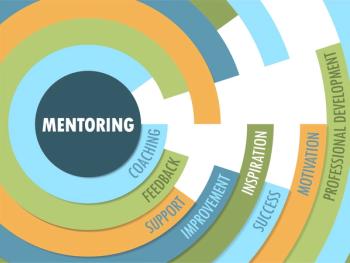
- Vol 37, Issue 8
- Volume 37
- Issue 8
How Reading Current Literature Stimulates Duh and Yawn Responses
An analysis of causes and potential interventions and recommendations for clinicians to stay up to date.
COMMENTARY
As (primarily) clinicians of a certain age, when picking up copies of mainstream and
Not entirely jaded, and perhaps slightly privileged by our station to be blunt, professional duty demands that we call it as we see it. Decades ago, we recall looking forward to each new issue, anticipating it would likely contain at least several reasonably understandable, clinically relevant, informative articles. Not now. Paradoxically, although revenue sustaining these journals come in large part from pharmaceutical, medical device, and services advertising aimed at practitioners, the journals publish fewer and fewer clinically pertinent, readable articles. Overall, we feel we have not left the journals; the journals have left us.
Our impressions are regularly verified by colleagues and students. Many practitioners report they never read journals because they find them largely to be a waste of time since so many published articles fail the clinical relevance test.
We are not inclined to be anti-scientific nor whining complainers. In fact, understanding the multiple functions that journals serve in academic life, we appreciate the remarkable efforts and contributions of editors. Still, if these journals are to remain reasonably relevant to practicing psychiatrists, as they once were, we feel obligated to explore what has transpired and to suggest remedies.
To start, Duh responses (
- Articles hawking certain psychotropic agents as effective and efficacious, despite mountains of modest findings and scientific evidence to the contrary, are unwarranted, irritating, and dishonest. Compared with heart disease over the past 70 years, the lack of meaningfully new treatments for two of psychiatry’s principle concerns, depression and schizophrenia, is striking. Since 1950, cardiology has had more than 14 new pharmacological treatments compared to approximately one quarter of that number for mental illness.
- Enthusiastic reports hyping newly FDA-approved “me-too” drugs that are no better than garden-variety generics in clinical practice, and that upon methodological scrutiny are promoted based on subtly corrupted research methodology favoring the new guy.
- Articles promising more than can be delivered, for example showing unbridled optimism for medications and compounds with high risk of abuse.2
- Similarly, articles touting unwarranted enthusiasm for the effectiveness and efficacy of a variety of psychotherapies despite years of scientific evidence to the contrary, including “me too” therapies based on subtly
corrupt research methodology .3 As well, the continued overreliance on meta-analyses to ascertain efficacious treatment has proven to be an unhelpful substitute for new head to head comparison of specific psychothrapies.4 - Studies focused on genome-wide analyses, neuroimaging, personalized psychiatry, and artificial intelligence, enduring search for biomarkers and a slew of other basic science and epidemiologically remote studies, which, while of potential intellectual interest to subsets of psychiatrists, are of dubious clinical relevance, generating mountains of “so what” associational, not causal, findings that yield little of value for either educating or treating patients. Topol, Verghese, and Ofri’s dialogue,
titled “AI may save some time, but it can’t listen to a patient” captures the clinician’s sentiment.5 The history of American psychiatry is replete with big promises but failed expectations, most recently the premature sanctifications of personalized psychiatry and artificial intelligence.6 - Papers propounding that childhood neglect, abuse, and other adverse experiences profoundly impact development, not only in childhood, but throughout the entire life cycle. How many times and in how many ways does this need to be repeated? Since thousands of publications on the neurobiology of trauma, from conception to grave, have unfortunately produced no clinically relevant treatment advances, practitioners at best might conclude the research findings are consistent with their clinical experiences but offer little new practical value.
- Intermittently erupting articles advocating integrating neurology with psychiatry in residency training and practice, which, aside from constituting a credible subspecialty, seems entirely unwarranted given current basic science and clinical services research. Some of these articles cite the promise of
NIMH’s Research Domain Criteria (RDoC) as providing a new paradigm for understanding mental disorders. While RDoC’s aspirational goals to improve psychiatry are laudable, at this time research based on RDoC paradigms does not appear to translate readily into clinical innovation.
In contrast, Yawn responses (
- Turgid and obscure writing, a cross between legal-ese, technical engineering manuals and Jacques Lacan.
- Hyperverbose lengthiness, where take-away lessons could be transmitted in a paragraph or 2.
- Lengthy, excessively technological, scientifically super-specialized sections suitable for Cell or Nature Biotechnology.
- Displays of statistical virtuosity, understanding of which might require a post-doc in mathematics.
- Authorships by a multinational consortium of at least 100 authors.
What accounts for the flood of Duh- and Yawn-ogenic publications?
Editorial boards and publishers are conflicted in attempting to serve several masters concurrently. Consequently, their changing determinations regarding journals’ purposes, intended audiences, and “customers” contribute to increasing numbers of Duh- and Yawn-ogenic publications. Guarding their profession’s sacred knowledge, journals archive new discoveries. Obligated to keep financially afloat, journals accommodate governing boards and advertisers. Finally, possibly in last place, serving educational needs of professional organizations’ members-at-large, journals attempt to inform and teach to increase clinicians’ knowledge and skills.
Balancing these diverse agendas, editors have been particularly sensitive to several trends:
- Impact factors: Based on the number of times its articles are cited, a journal’s impact factor constitutes its prime claim to fame. The more scientifically citable, the bigger the impact factor. Invented in 1975 and invigorated and more widely promulgated in 1992, impact factors have played increasingly large roles among journal editors competing for the best submissions. No surprise, journal editors compare the size of their impact factors. Questing for prestige, editors have tended to favor manuscripts with the most scientific gravitas—the most consortium-authored, “basic science,” mathematically obscure, complex, and unintelligible manuscripts.7
- Increasing numbers of academic scientists and clinician-educators are obliged to publish for promotion, to get grants funded and refunded, and for narcissistic strokes. Accordingly, authors increasingly publish in conglomerates (the number of authors per publication is rising substantially), publish numerous papers on the same data-sets, and publish their findings and opinions concerning the same clinical problems facing hundreds of other investigators across the world, not surprisingly most often with similar outcomes and similar hesitant conclusions. Hence, “endemic publishiasis.”8
- For commercial enterprises (important journal advertisers such as pharmaceutical companies, device-makers, software, and other proprietary program developers), publication in major journals provide outlets for publishing gold-standard randomized controlled trial data necessary for FDA approvals. As important, these articles help companies disseminate infomercials targeting clinicians concerning their products, programs, and services, in the garb of scientific publications. Similarly, “Me-Too” psychotherapy outcome studies often serve to promote psychotherapy “brands,” despite significant shortcomings in generalizability.
Potential cures for the duhs and yawns
Remedies must address 2 distinct considerations: First, what might journals do to better address the needs of clinician subscribers? Second, perhaps more important, how should today’s clinicians satisfy their needs to keep informed and current? Clearly, it is not just about journals.
What journals might do
Journal editors know they need to offer non-super-specialized, working clinicians enoughin each issue to keep them coming back (
Journals could also
- Use science writers to convey clearly important messages for clinicians. High-visibility journals (consider Science, Nature, and JAMA), admittedly work with larger budgets. They employ banks of science writers who recast each issue’s most significant findings into articles akin to the reading level of Scientific American detailed summaries that convey much more information and guidance than brief abstracts but which are less wordy than the Manhattan phone book. Most clinicians would welcome more of these pieces, especially those that clearly detail clinical implications and applications. Science writers could succinctly provide no-nonsense critiques of faulty research designs, from randomized trials through meta-analyses.
- Next to each title in the table of contents editors could note estimated required reading times and note the article’s likely purposes. Many online magazines already estimate reading times; easy-to-digest text usually takes about 250 words per minute to read; difficult-to-digest texts imposing greater cognitive loads take more time. Regarding purpose, is this article likely to change clinical practice with respect to assessment or interventions? Primarily inform clinicians and patients about clinical course, causes or mechanisms? Advance basic science with little current clinical impact? Yelp-like icon tags can speed screening.
- Require authors to tell their stories more concisely. Verbose details can go to online supplements. As some journals already do, put the introduction, abbreviated results and discussion up front, leaving the methods and detailed results in a smaller font afterward, or as online supplements for the handful of readers for whom they might be meaningful. Reduce the font size for methods and results sections. Make certain that tables and graphics are best formatted to quickly convey complex findings.
ronstik_AdobeStock
Although we believe that it is too early for clinicians to give up on journals, certain strategies might improve their overall reading experiences.9 As most clinicians already do, skim tables of contents to see, first, based on titles if any of the articles seem pertinent to their practice or interests; second, skim the abstracts to see if the article might be worth reading further; and third skim the article to see if it is readable.
But in fact, journals will be journals, only sometimes addressing the needs of working practitioners. Therefore, clinicians are obliged to use a wider array of sources for keeping up, forced to discriminate intelligently in order to “drink from the firehose” of information.10 The trick is to find trusted, newsworthy sources that package “True News” rather than “Fake News” (tons of which float around the medical-industrial arena). Granted, readers must always guard against insidious influences of biasing financial, intellectual, and other conflicts of interest; many readers summarily mistrust articles by authors with a large number of industry-related conflicts for good reason, beyond which dishonest disclosure is by no means rare.11
Several free-of-advertising authoritative knowledge scouts, compilers, digesters, synthesizers, and curators offer reader-friendly and useful newsletters, journals, and online services. Similar online functions are provided by several commercial medical communications companies. Professional newsletters publish often excellent, well-written state-of-the-art summaries. Similarly, constantly updated online textbooks offer point-of-care information.
Finally, increasing numbers of clinicians seem to live in a post-journal era, reducing their Duhs and Yawns through social media, podcasts, blogs, blurbs, and burps. The challenge for the field, however, is discerning which sources vying for clinicians’ attention via these media have integrity and tell the truth.
Dr Kay is Professor Emeritus and Past Chair of Psychiatry Wright State University Dayton, OH. He is an Editorial Board member of Psychiatric Times. Dr Yager is Professor of Psychiatry, University of Colorado, Denver, CO. He is an Associate Editor of Journal Watch for Psychiatry, a Section Editor for UpToDate, and Senior Advisor for FOCUS.
References
1. Saint S, Christakis DA, Saha S, et al.
2. Turner EH. Esketamine for treatment-resistant depression: seven concerns about efficacy and FDA approval. Lancet Psychiatry. 2019;6:977-979. doi: 10.1016/S2215-0366(19)30394-3.
3. Goldfried MR.
4. Swartz HA, Fournier J. Can network meta-analyses substitute for direct comparisons in psychotherapy trials? JAMA. Doi:10.100/jamapsychiatry.2019.0243
5. Topol EJ, Verghese A, Ofri D. AI may save some time, but it can’t listen to a patient. Medscape. August 22, 2019. Accessed July 8, 2020.
6. Emanuel EJ, Wachter RM. Artificial Intelligence in Health Care: Will the Value Match the Hype? JAMA. 2019;321(23):2281–2282. doi:10.1001/jama.2019.491
7. Gargouri, Y, Hajjem, C, Larivière V, et al. The Journal Impact Factor: A Brief History, Critique, and Discussion of Adverse Effects. In: Glänzel W, Moed HF, Schmoch U, Thelwall M. Springer Handbook of Science and Technology Indicators. Cham, Switzerland: Springer Nature; 2019: p3-24.
8. Yager J, Taintor Z. Endemic Publishiasis: Redux and Growing. Acad Psychiatry. 2017;41:833–838.
9. Laine C, Weinberg DS. How can physicians keep up-to-date? Annu Rev Med. 1999;50:99-110.
10. Patil C, Seigel V. Drinking from the firehose of scientific publishing. Dis Model Mech. 2009;2:100-102.
11. Orenstein C. Public disclosure to physicians from industry. JAMA. 2017;317(17):1749-1750. ❒
Articles in this issue
over 4 years ago
Suicidal Ideation and Behaviors in Oncology Patientsabout 5 years ago
Looking to the Future and Improving Patient Careabout 5 years ago
Case-Based Clinical Approaches for Cliniciansabout 5 years ago
Finding Meaning in the Face of Sufferingabout 5 years ago
To Scan or Not to Scan: Brain Imaging in First-Episode Psychosisabout 5 years ago
Cytochrome P450: You've Come a Long Wayabout 5 years ago
A Challenging Psychotherapeutic Journeyover 5 years ago
A Double Whammy: Psychosis and Huntington DiseaseNewsletter
Receive trusted psychiatric news, expert analysis, and clinical insights — subscribe today to support your practice and your patients.













